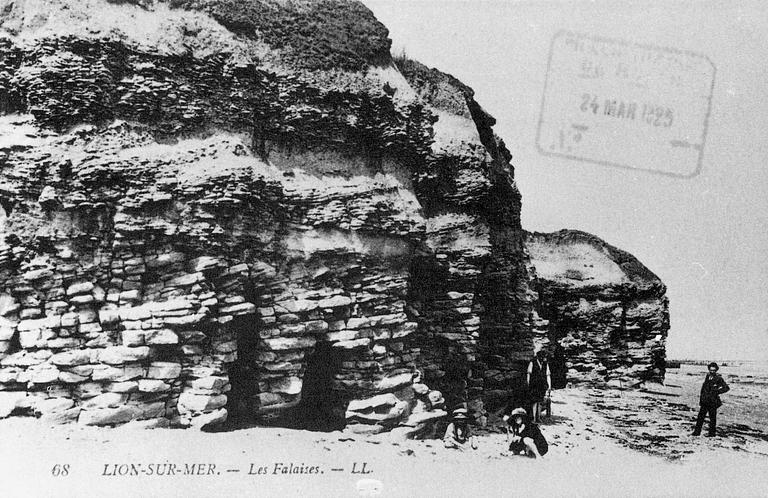Carl Fredrik Hill
Coastal Landscape, Luc-sur-Mer (towards the Cliff of Lion-sur-Mer)
Executed 1876. Oil on cardboard 37 x 45 cm
Provenance
Previously in the collections at Torup Castle, Bara Parish, Skåne
Exhibitions
Malmö Museum, 'Carl Fredrik Hill - retrospektiv utställning', 1933, cat. no. 74.
Galleri Färg och Form, Stockholm, "Carl Fredrik Hill (1849-1911)", February 1943, cat. no. 54.
Malmö Rådhus, exhibition arranged by Föreningen Malmö Konsthall, 'Carl Fredrik Hill (1849-1911)', March 1943, cat. no. 50.
Nationalmuseum, Stockholm, "Carl Fredrik Hill - Memorial Exhibition", September - October 1949, cat. no. 52.
Skånska Konstmuseer, "För att känna Hill", 19 April - 3 May 1953, cat. no. 17.
Nationalmuseum, Stockholm, "Carl Fredrik Hill", 1 October 1999 - 16 January 2000, cat. no. 49.
Literature
Erik Blomberg, "Carl Fredrik Hill. Hans friska och sjuka konst", 1949, illustrated full-page pl. 18.
Adolf Anderberg, "Carl Hill. Hans liv och hans konst", 1951, illustrated full-page pl. 77.
Sten Åke Nilsson, "Carl Fredrik Hill. Maximus Pictor", 2011, illustrated full-page p. 108.
More information
In August 1876, Carl Fredrik Hill arrived in Luc-sur-Mer in Normandy, on the Northern french Atlantic coast. During the two years he spent in Paris, he initially received favourable reviews and had his first painting accepted for the Salon. He finally felt free from the strict Swedish Royal Academy of Art and could paint in a new environment. He was greatly inspired by Camille Corot, the famous French landscape painter. In the following years, he travelled and sought new subjects in the surrounding areas outside the city. Rail travel had taken off in Europe and new train stations had opened on the lines leaving Paris. The development of the railway enabled Hill to travel extensively between 1873 and 1876. His journeys started in Paris and stretched from the Atlantic coast in the north-west to Boi-le-Rois, Fontainbleau and Montigny on the River Loing south of the capital. In 1875, the station at Luc-sur-Mer on the Atlantic coast was inaugurated.
On the French Atlantic coast, the artist found a surprising new and inspiring subject.
Between the two coastal villages of Luc-sur-Mer and Lion-sur-Mer lies the dramatic rocky area known as ‘La falaise des Confessionnaux’. Over thousands of years, the sedimentary rock wall has been eroded by the sea and in places plunges vertically down to the beach. The powerful tides have eroded the rock, creating a system of caves all along the coast. Hill was struck by the magnificent natural experience of the rock wall meeting the wide shores of the sea. The ebb and flow brought to life a world of maritime flora and fauna and, as a counterpoint on the horizon, the white facades of human settlements gleamed in the light. In less than a month, Hill created some of his most powerful and expressive landscape paintings.
Bo Wingren summarises: ‘In the early summer of 1876 Hill was in Montigny, a small town on the Loing near Grez and much visited by both French and foreign artists.
This year was perhaps Hill's most transformative and creative period in France. The dark asphalt-colour paint disappeared from his palette, painting flourished, and his output was impressive. Some of this development must be attributed to Hill's experience of the second Impressionist exhibition that year. The sun-drenched streets and sandy hills of the Montigny area eventually became too much for Hill. He decided to travel to the coast, an idea he may have received from his older friend and patron Gegerfelt‘ (’Back to Normandy: Nordic Artists in Normandy 1850-1900", 1992).
Artist
Carl Fredrik Hill was a Swedish artist born in Lund. Hill is considered one of Sweden's formost landscape painters. His fate and artistry are perhaps the strangest but most interesting in Swedish art history. Born in an academic home in Lund, despite his father's protests, he managed to begin studies at the Art Academy in Stockholm and then traveled to France, where he came in contact with Corot's landscape painting. He found his inspiration in Barbizon and later on the River Oise, in Luc-sur-Mer and Bois-le-Roi. He painted frantically with the hope of being accepted into the Salon de Paris. Already during his student years, he struggled with an incipient mental illness and at the age of 28 he was taken to the mental hospital in Passy. During the hospital stay he began his rich production of drawings and then continued with the production after his return to Lund, where he was cared for by his family for the rest of his life. In thousands drawings, a fantasy world of figures scenes appears. Today, Hill's river landscape and flowering fruit trees from the years in France, together with the visionary drawings from the period of illness in Lund, have received great recognition. His art depicts a loneliness and longing that is easy to get caught up in. He is mainly represented at the Malmö Museum and at the National Museum in Stockholm.
Read more




























































